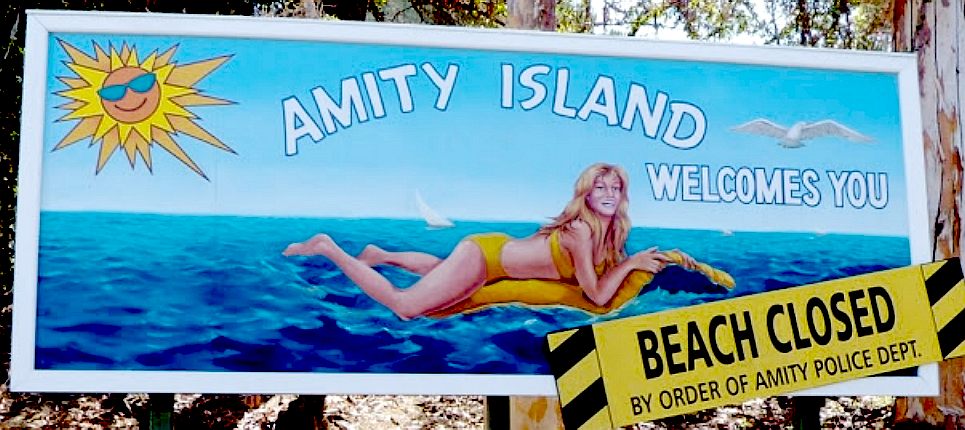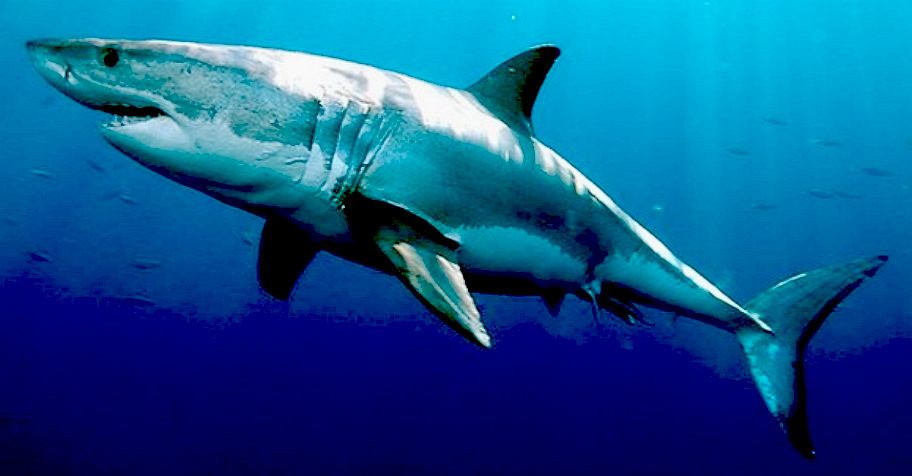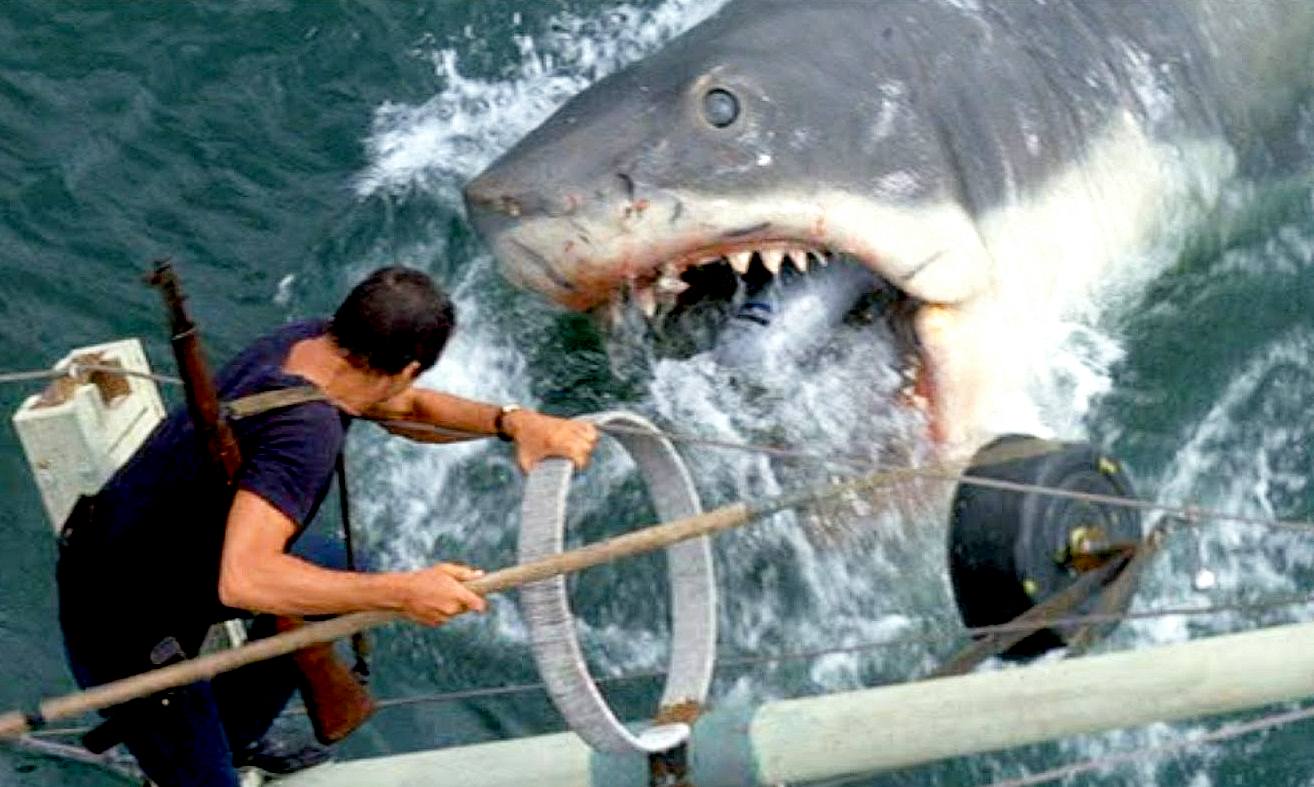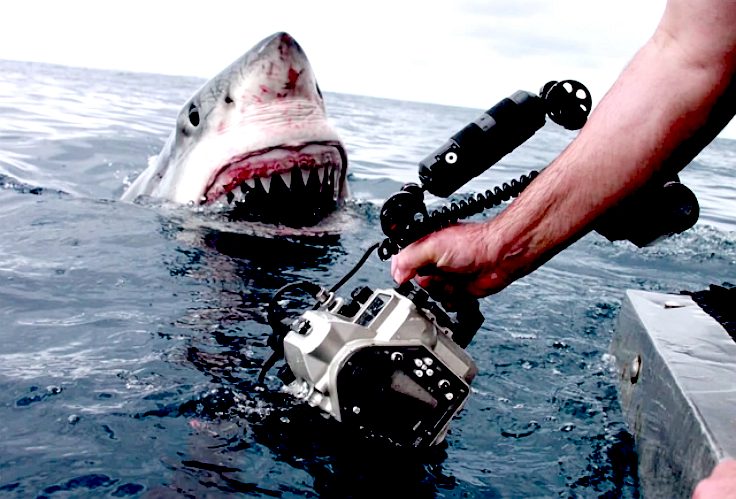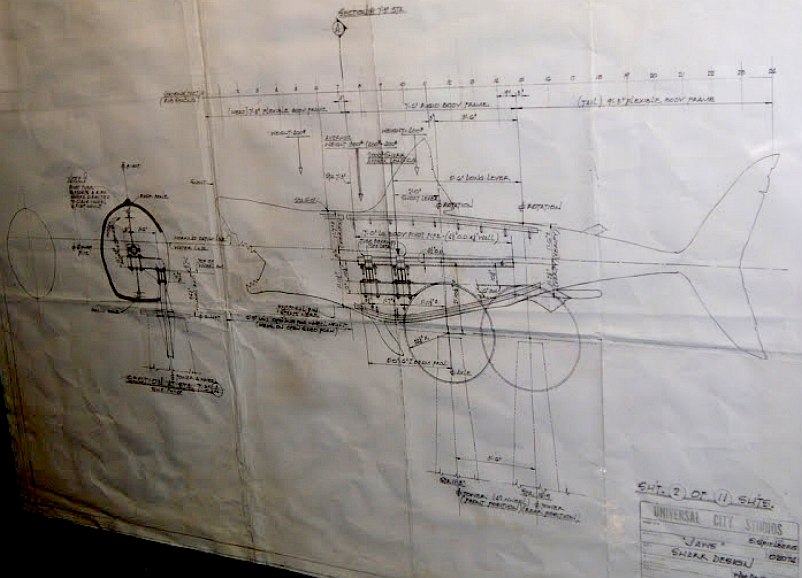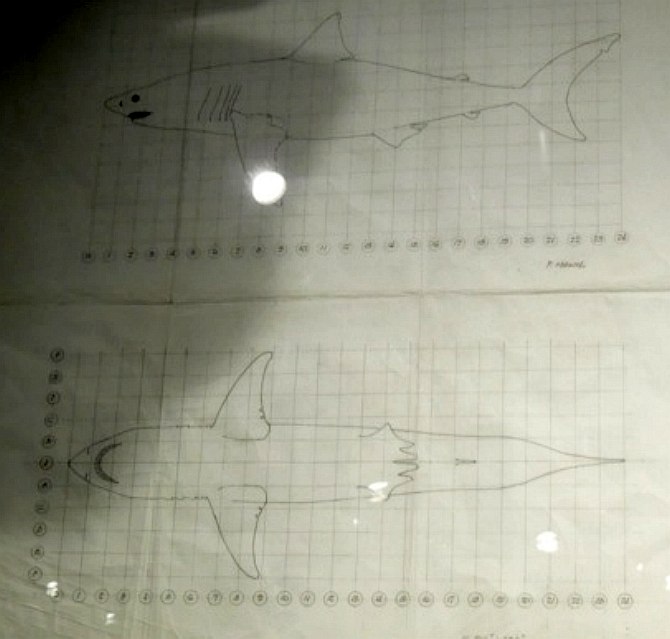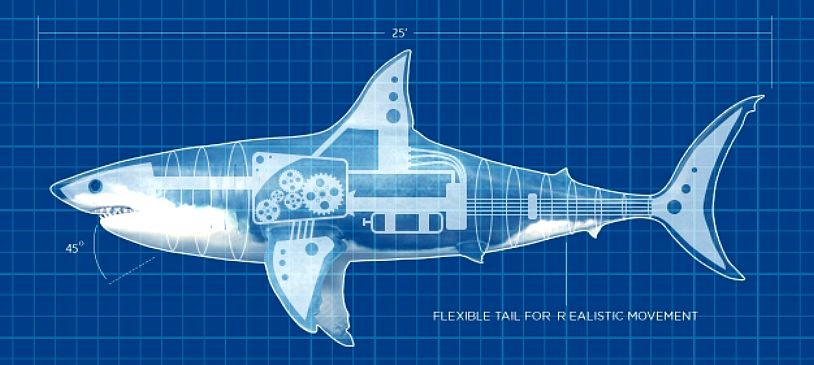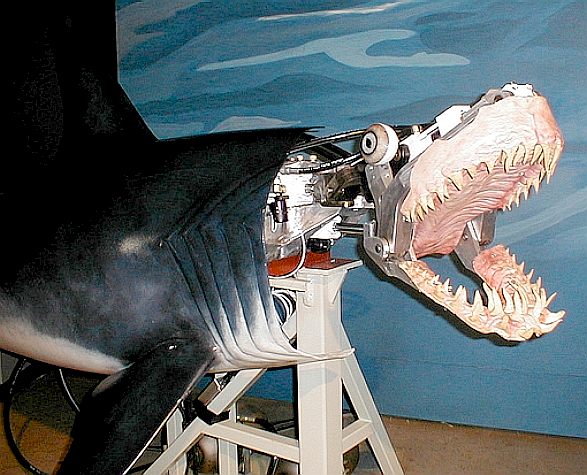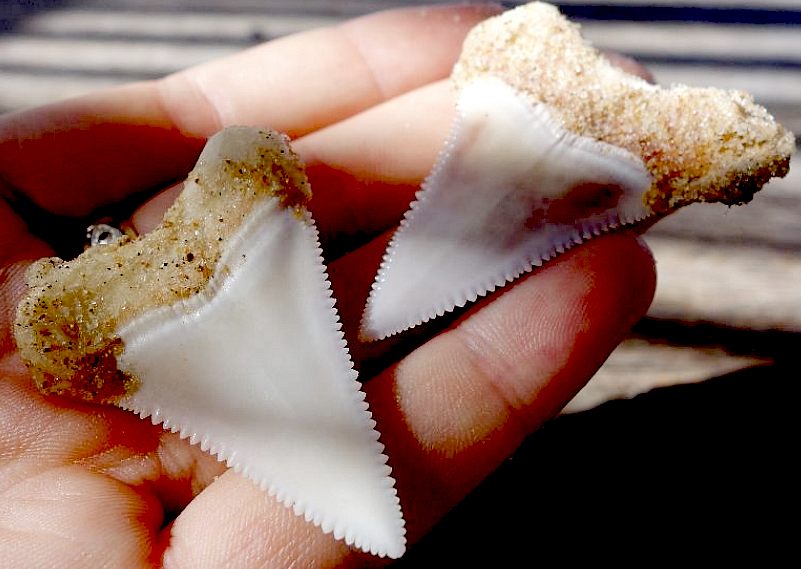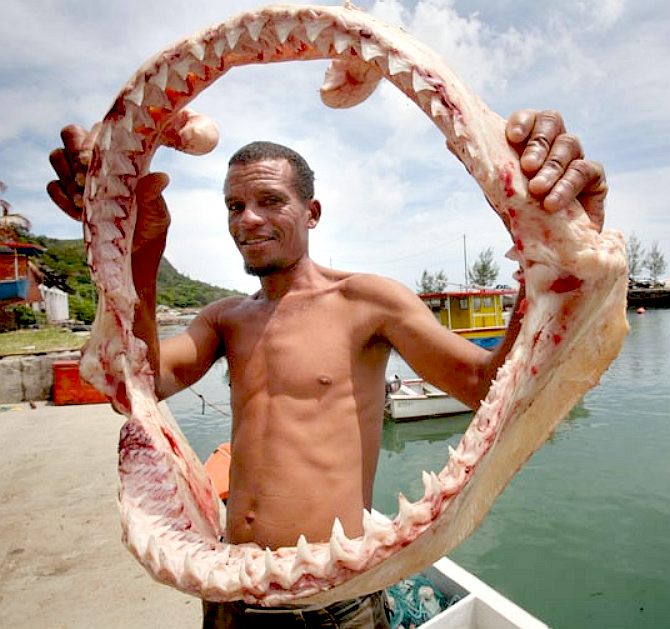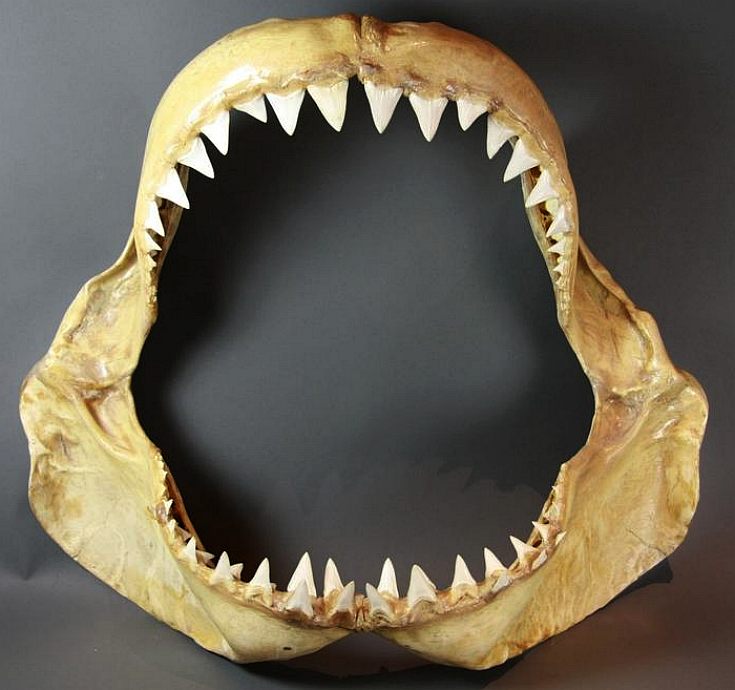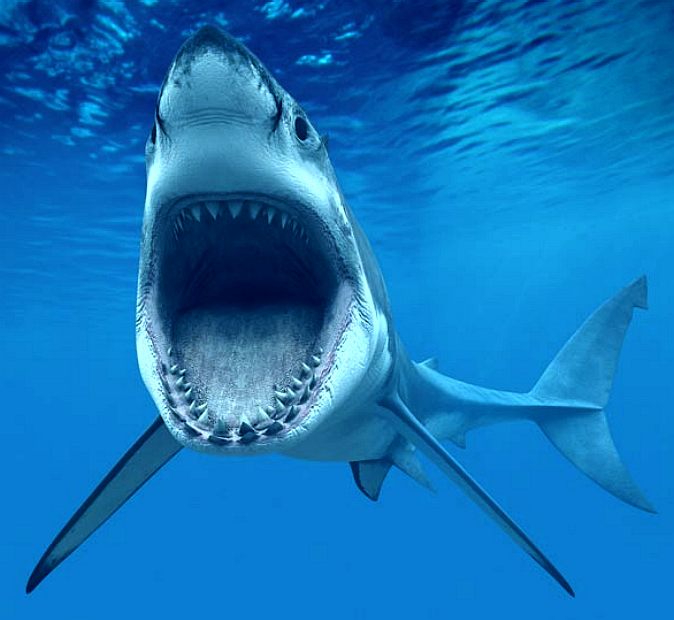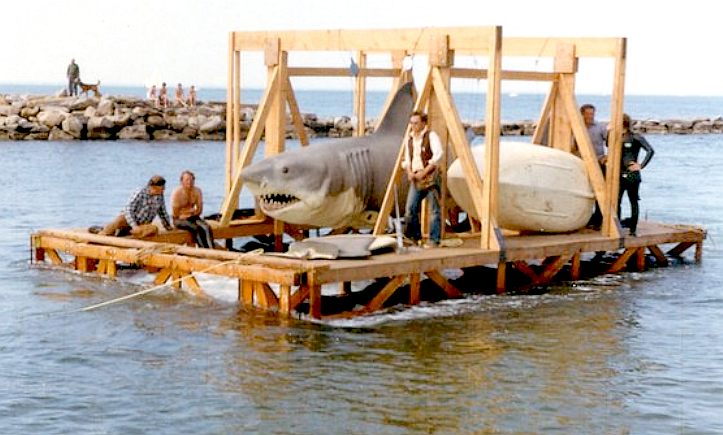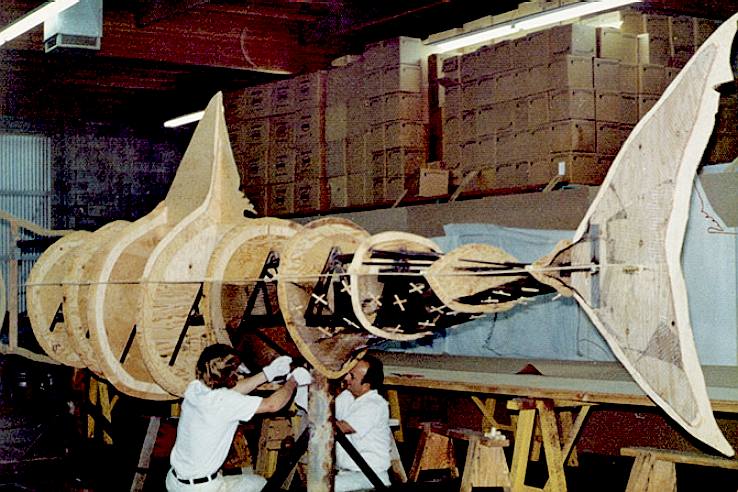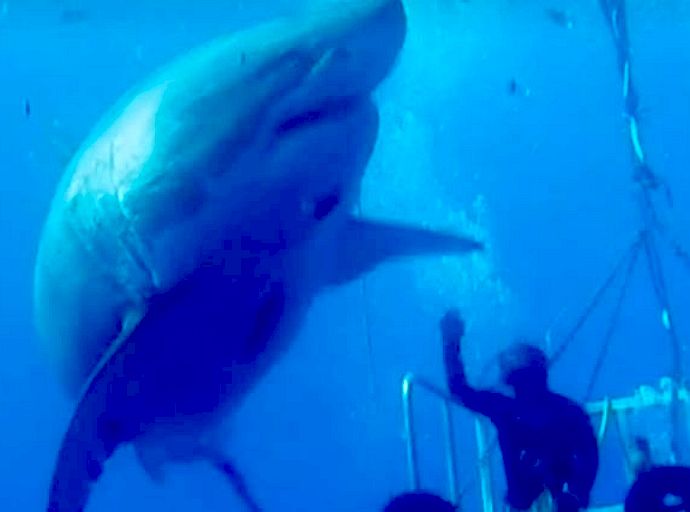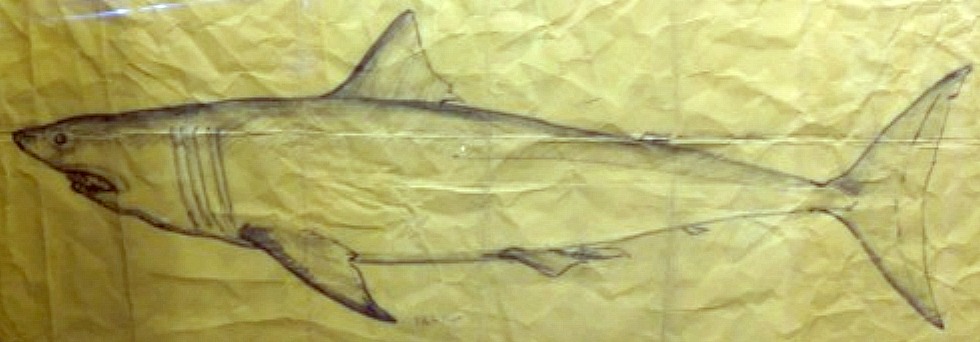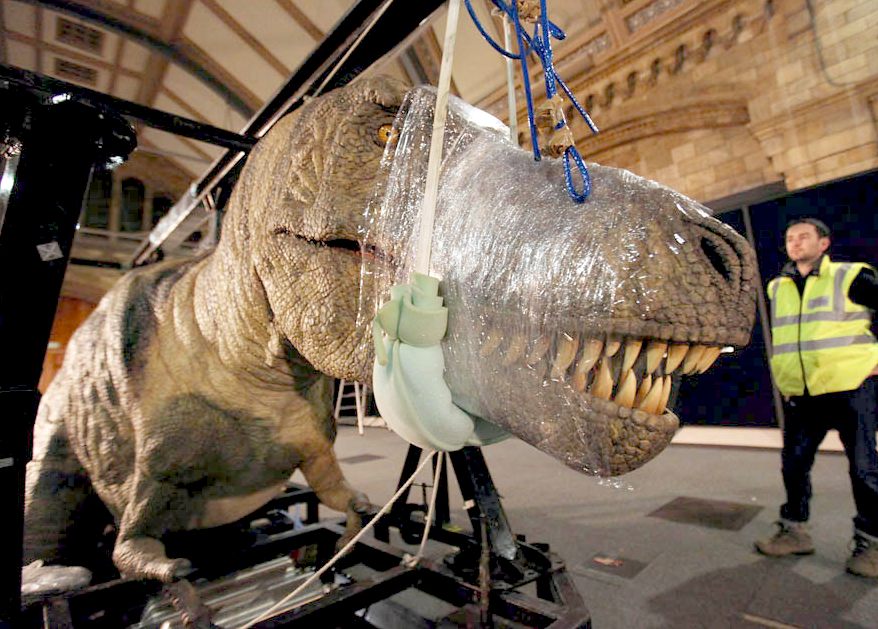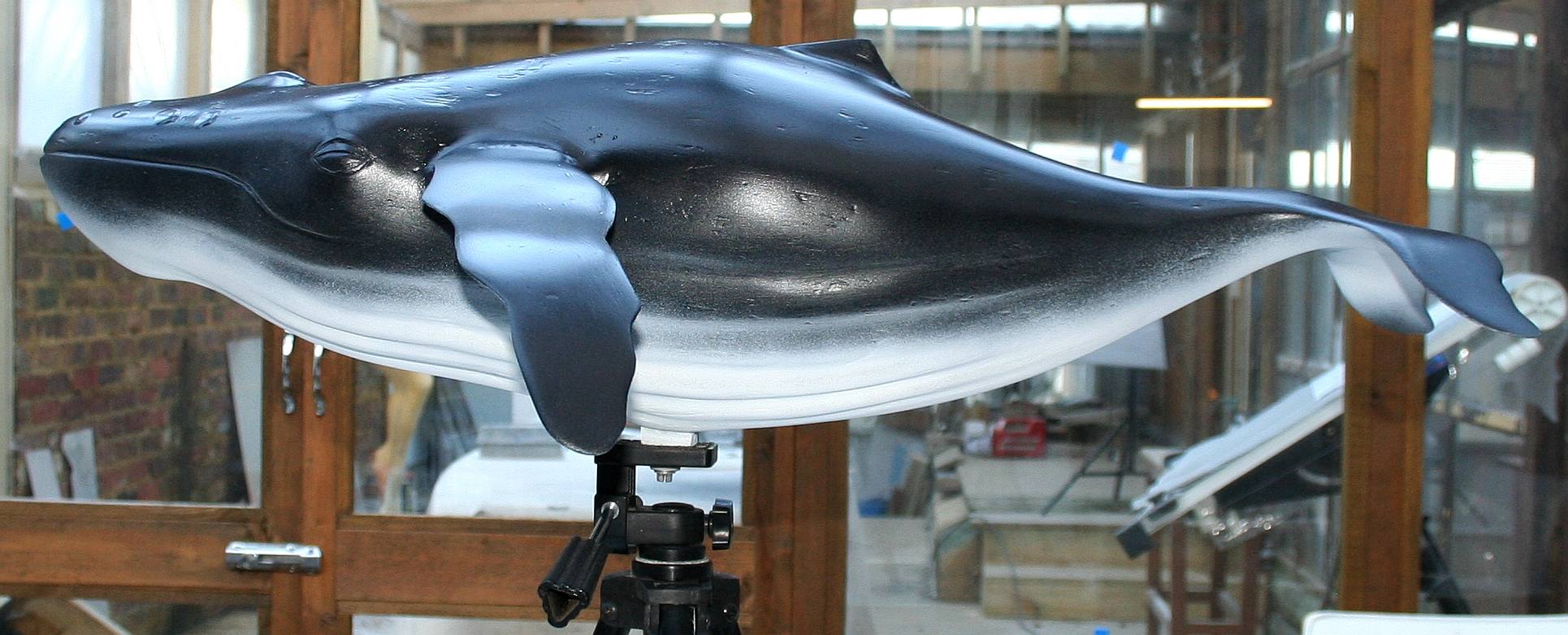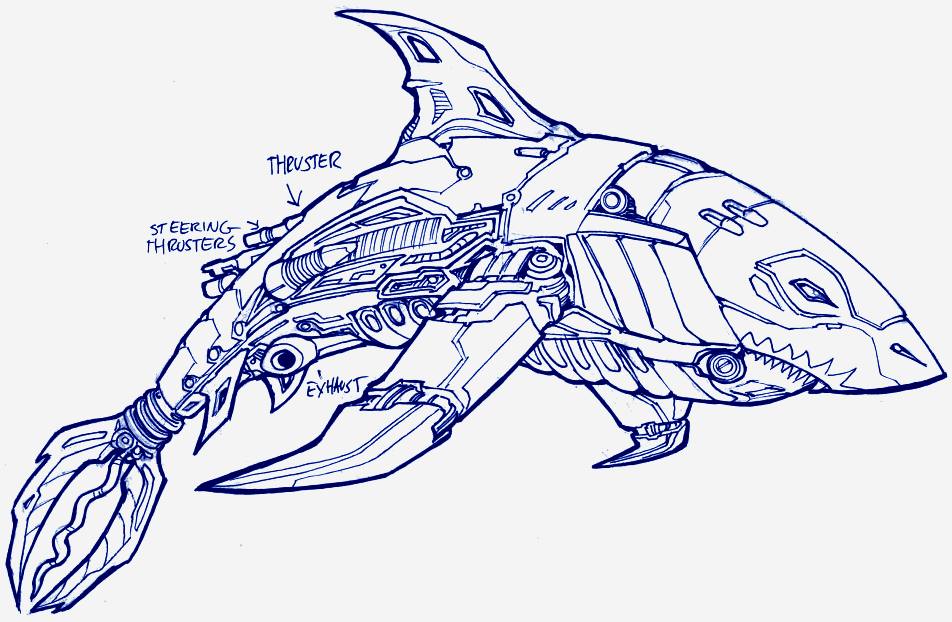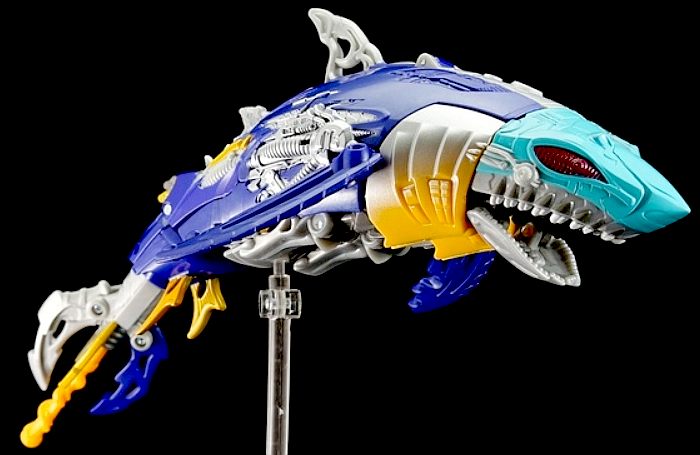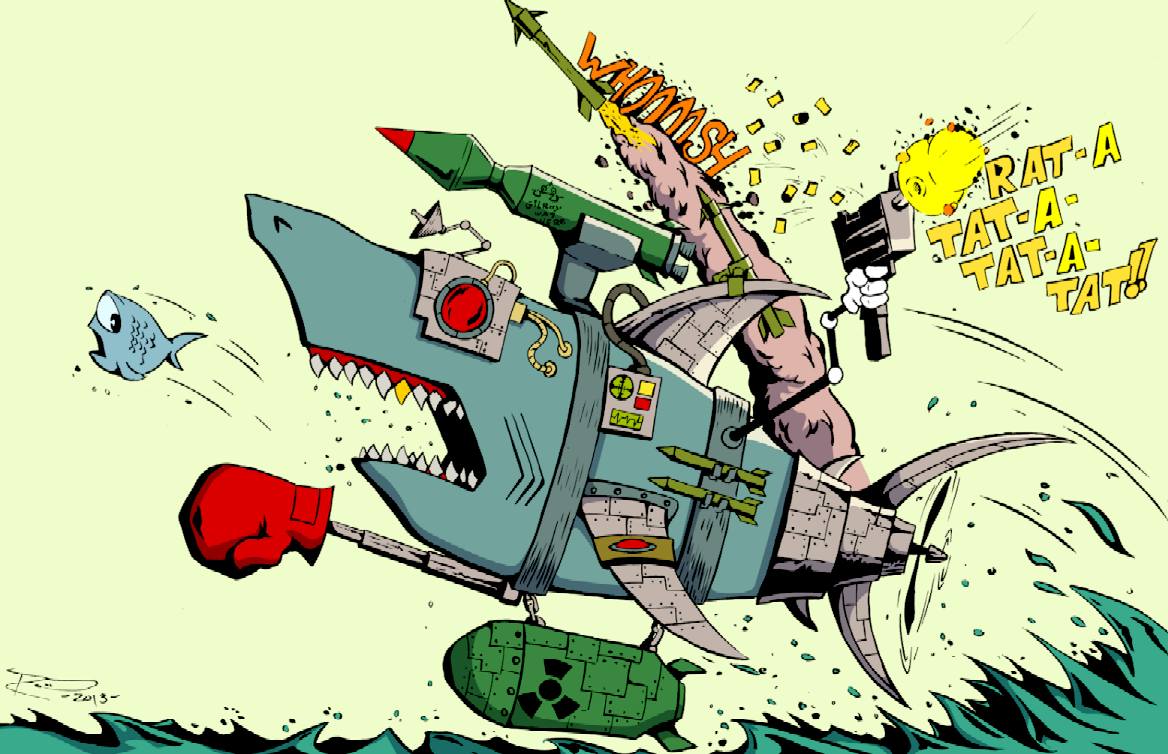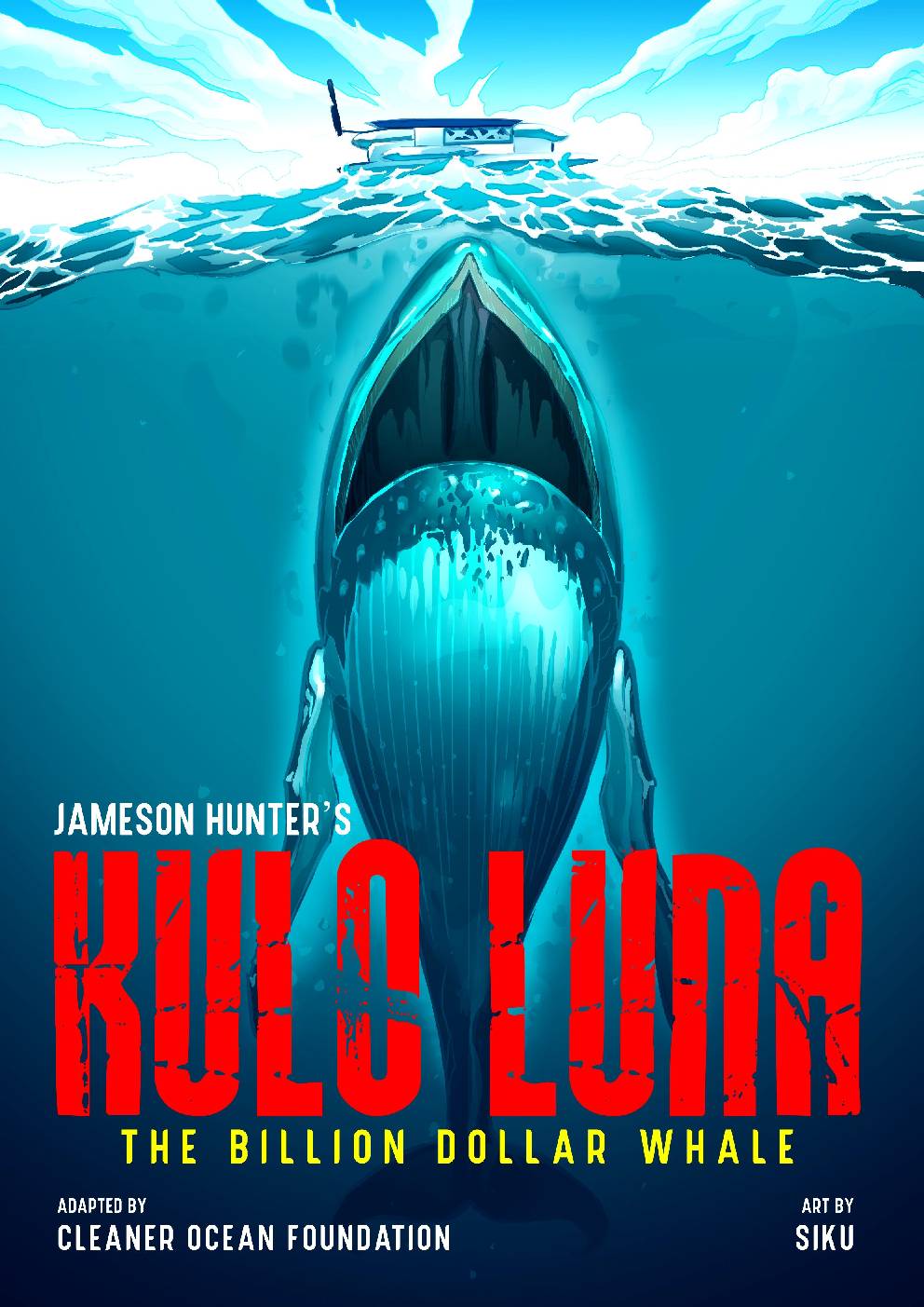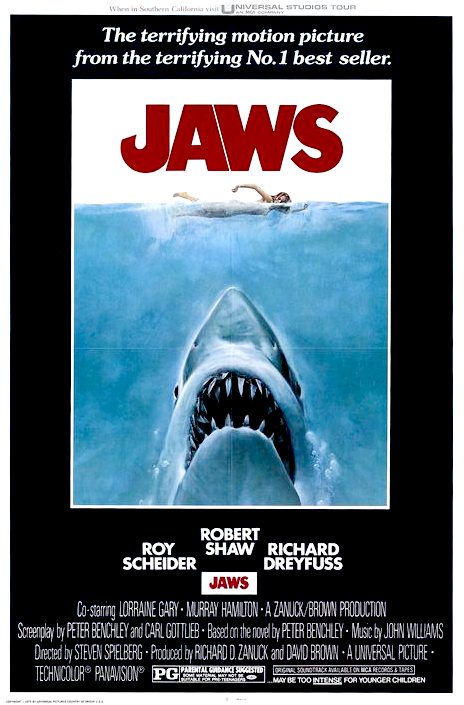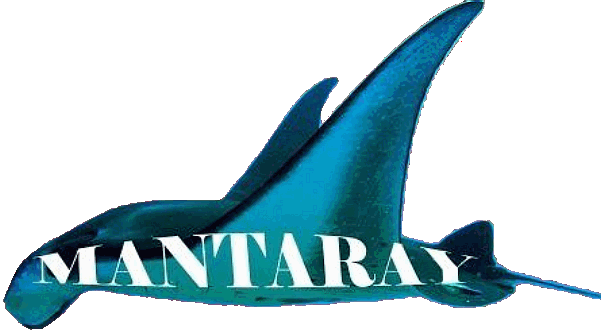|
SHARK - ANIMATRONIC STUDY
|
|||||
|
WARNING - How do you stop people going into the water? That's right, you put up a big sign saying not to swim and enforce that with a bunch of sheriffs. Conversely, how do you get people to want to go into the water, or into a building for that matter? Yup, you show them the scariest creature in the ocean and frighten the hell out of them - safely of course. People
STUDY IN BLUE
Bluebird Marine Systems had been asked to look at the possibility of creating one of the most exciting displays in the world, but could not afford to stop their work on ocean plastic. If the project had gone any further it may have produced one of the largest and potentially most profitable showcases ever built that to suit many operators of exhibitions of all kinds. The company ceased trading in 2017.
The brief was to create the largest interactive robot shark in the world. It must be capable of thrilling viewers with a combination of movement, lighting and sounds. That's a tall order where such a large exhibit will weigh quite a bit. Thus, the starting point might be the jig which might double as a launch platform and transport trailer, if we want to keep costs down and reduce complexity and workshop space all at the same time.
OTHER PROJECTS - WALT CONTI
Animatronics creator Walt Conti tells PM how building two ferocious sharks for Shark Night 3D, out Sept. 2, is "a marriage of art and technology."
Conti began by looking at hundreds of photos of great whites and hammerheads. To ground the anatomy in reality, Conti's team started with a real set of jaws from each shark. "That way, you can't cheat," he says. Artists made a sculpture of the shark based on the size of the jaw, then created a mold from the sculpture. Conti poured urethane rubber into the mold. When the material dried, it became the sharks' skins, which the team then painted using the photos as a reference.
MEMORIES - Most of us remember this shark. It thrilled audiences back in 1970s but the movie was almost a flop without a sound track, and the unreliability of several left and right models nearly floored Spielberg's career before it began. Thankfully, Steven proved to be more resilient and simply adapted his script in the face of mounting technical and financial issue - the mark of an adaptable director and true producer.
LOFTING - We are treating this feasibility study much the same as we build boats. As with the Jaws team, we start with a scale drawing. The above is one of the drawings that Universal Studio subcontractors worked from. You can see that from tip to tail they were working to 24 feet at the OAL.
EXHIBIT DESIGN & DISPLAY
The design of the display is just as important as the engineering that goes into the shark. The shark robot is the starting point for the mechanicals of the exhibition, but they should be joined at the hip. Check out the making of our revolving display for a model boat exhibit at the Old Billingsgate halls in London, November 2015. Note how the stand compliments the exhibit and the two work together to put on a good show.
OPEN WIDE - If you are going to make a shark replica, you must get the teeth and jaws right and the tilt angle of the head. We wouldn't want to be his dentist. What toothpaste would a shark use do you think? Aquabite or Dentasharp! Sharks don't need toothpaste, instead they have an armory of replacement teeth.
Frame or skeleton - Steel, aluminum, plastic, and wood are all commonly used in building animatronics but each has its best purpose. The relative strength as well as the weight of the material itself should be considered when determining the most appropriate material to use. The cost of the material may also be a concern.
Exterior or skin - Several materials are commonly used in the fabrication of an animatronics figure's exterior. Dependent on the particular circumstances, the best material will be used to produce the most lifelike form. For example, "eyes" and "teeth" are commonly made completely out of acrylic.
LAUNCH PLATFORM - Not exactly elegant, but this is the floating rig or raft from which 'Bruce,' one of the animatronic sharks used to make the Jaws movie was launched and recovered. Obviously they did not care about longevity, using untreated softwood for the frames. We are taking a different approach.
KONTIKI - One of the most famous rafts in history was that used by Thor Heyerdahl for his Kontiki expedition in 1947. Thor was born in 1914 and celebrated his 100th birthday on the 6th of October 2014. The Kontiki raft covered 4,300 nautical miles in 101 days at an average speed of 42.5 miles per day.
Anyone who has a passing interest in
the Jaws movie knows that the animatronic shark kept breaking down. This
turned out to be a blessing in disguise, because Steven Spielberg had to add more character development and depth to the
script to build tension. Not though a great beginning for marine
animatronics.
BRUCE - was built with plywood formers as you can see, mated to steel frames wherever there is a hinge for movement. We are not sure if any of the Jaws sharks were designed to emulate a real swimming stroke authentically, but if we get to make our shark, we'll be sure to study a real fish and replicate that movement as far as practical.
Nature has already done the design work for you. The first port of call is the cartilaginous backbone, then the muscles. An exoskeleton arrangement with flexible skin over the sections would be just too stiff. You'd be better off with a backbone and a soft polyurethane foam former (or foam latex sandwich), onto which is stretched a flexible skin. Then, if the robot mechanism (muscles) has the same degree of movement as the real fish, it will move and even swim like the real thing. Imagine if you will a scuba diver's flipper. The blade is flexible, a human foot is relatively inflexible. It is the flexibility of the flipper blade (fin) multiplied by the area that allows a scuba diver to swim so fast, converting to-and-fro movement into thrust efficiently. Fish rely on the same principle. Why not try it for yourself in the water.
When Jaws was first set up at Universal, the book by Peter Benchley was still in galleys, and the biggest names attached to it were producers David Brown and Richard Zanuck. The first person onboard to work on Jaws was art director Joe Alves. Once Bob Mattey had confirmed to Joe Alves that the shark could be made, he was given the green light to get to work.
In January of 1974, Jaws the novel was published and it was a best-seller, somewhat accelerating the film. Hence, Universal Pictures decreed the movie had to be shot that summer, which gave Mattey no time to perfect his mechanical monster-piece.
ENGINEERING - A lot of steel goes into the making of an animatronic showpiece
The animatronic shark in Jaws showed how effective a robotic special effect could be. While the stories of it malfunctioning are legendary, it is completely believable and terrifying
onscreen - for the its time. The climax, where the shark and Roy Schieder battle to the death, is utterly dependent on the creature's effectiveness and
though it had a relatively stiff or restricted movement, it delivers. While
Steven Spielberg hid the shark until the climax, Bob Mattey's monster lives up to the film's build-up by being as scary as we
potential audiences were told it would be - up to that point.
DAILY
EXPRESS JUNE 2015 - The more than 20 feet (nearly 7m) long sea beast was filmed by cage divers in Mexico.
The sheer scale of the monster fish is jaw dropping when seen next to the divers.
ART - It all starts with a drawing of the big fish. From there it is possible to plan out the stages of design, the complexity and the method of display.
MECHATRONICS
A mechatronics engineer unites the principles of mechanics, electronics, and computing to produce a robot that looks and acts like the real subject .....
NATURAL HISTORY MUSEUM, LONDON
Three
animatronic giants: Camarasaurus, Tarbosaurus and Gallimimus, were the big stars in Age of the Dinosaur
exhibition that opened on Good Friday, 22 April 2011. Paul Gallagher,
their exhibition Project Manager, is quoted as saying: 'I am really impressed by the skin quality and the realism of the dinosaurs up close,'
after inspecting the 1.5 tonnes Tarbosaurus inside the Museum.
Developed with palaeontologists, animal behaviour experts, biologists and Museum curators, Age of the Dinosaur is a unique journey through the three periods of the Mesozoic era - the Triassic, Jurassic and Cretaceous.
Travelling back between 65 million and 250 million years, visitors are immersed in scientifically accurate habitats, witnessing the sights, sounds and smells of the world of the
dinosaurs.
MOUNTED - Most of our models are fitted to revolving displays where the stand is motorised. This humpback whale model is fixed to a modified camera tripod for static showing. The detailing of this particular artwork is to follow the Refill event in Eastbourne on January the 26th 2019. This model is made of fibreglass over a core of polyurethane foam. The GRP is overlaid with a flexible putty for shaping, surface preparations and painting. Copyright © Jameson Hunter December 24 2018.
An atmospheric underwater area depicts ocean life from the Jurassic period. Animals, fish and ammonites swim past as visitors see specimens from the deep close up.
There's also a Cretaceous period watering hole. Strange sounds fill the air and accurate recreations of trees, plants, animals and insects complete the sensory experience.
Her Royal Highness The
Duchess of Cambridge became
Patron of the Natural History Museum on 19 April 2013. The Duchess opened the Museum’s Treasures exhibition in the Cadogan Gallery in November 2012.
In 2004 a television crew created an animatronic plesiosaur (named “Lucy”) for their reality TV show, Crawley Creatures. Lucy was operated by three divers using motorized pods and made an appearance at two locations filled with tourists and in front of a cruiser near Fort Augustus. Despite Lucy sinking to the bottom of the Loch in an accident, the show was responsible for generating 600 new sightings of the Loch Ness Monster.
A video surfaced on YouTube in 2007 claiming to be Nessie jumping high into the air. Later, it was found to be part of Sony Pictures viral marketing campaign for the film “The Water Horse” and the YouTube clip was said to contain scenes from the movie, latterly disputed.
CONSERVATION
USAGE
Sea Life Sydney Aquarium (formerly Sydney Aquarium) is a public aquarium located in the city of Sydney, New South Wales, Australia. It is located on the eastern (city) side of Darling Harbour to the north of the Pyrmont Bridge. It is a full institutional member of the Zoo and Aquarium Association (ZAA) and the World Association of Zoos and Aquariums (WAZA).
The Sydney Aquarium has distinctly Australian themes and exhibits, which take visitors through the continent's waterways and marine ecosystems. Exhibits cover the rivers of Australia, exploring the Southern and Northern River habitats, as well as the oceans of Australia, through the Southern and Northern Ocean habitats. The complex and fragile nature of Australia's very different and unique aquatic environments is
emphasized.
MORE ART - These are a few superb drawings that show how sharks stir the imagination in all of us, with the fortunate few being able to capture those thoughts on paper. Even fewer will be able to bring these sketches to life. Film and cartoon companies are the exception.
LINKS & REFERENCE
NHM National History Museum nature plus blogs whats new March 2011 Popular mechanics culture movies shark night 3ds predators blow jaws out of the water NHM London touring exhibitions age of the dinosaur http://www.nhm.ac.uk/business-services/touring-exhibitions/age-of-the-dinosaur.html http://www.nhm.ac.uk/natureplus/blogs/whats-new/2011/03 http://www.popularmechanics.com/culture/movies/a7148/shark-night-3ds-predators-blow-jaws-out-of-the-water/ http://www.cfxworkshop.com/portfolio/sydney-aquarium-shark/ http://www.dailytelegraph.com.au/news/nsw/maneater-shark-terrifies-even-out-of-water/story-e6freuzi-1225890016332 https://en.wikipedia.org/wiki/Sea_Life_Sydney_Aquarium http://www.sydney.com/destinations/sydney/sydney-city/darling-harbour/attractions/sydney-aquarium http://www.tested.com/art/makers/455620-maker-faire-2013-roy-animatronic-robot/ https://en.wikipedia.org/wiki/Mechatronics https://en.wikipedia.org/wiki/Animatronics http://www.instructables.com/id/Simple-Animatronics-robotic-hand/ http://www.robots.nu/robot-animals/ http://www.mirror.co.uk/news/technology-science/technology/fancy-robotic-pet-check-out-4303902 http://www.huffingtonpost.com/2014/02/10/robot-animals_n_4733672.html http://www.history.com/news/thor-heyerdahls-kon-tiki-voyage http://www.smithsonianmag.com/smithsonian-institution/how-voyage-kon-tiki-misled-world-about-navigating-pacific-180952478/ http://www.kon-tiki.no/en/E-Exp_KonTiki.php http://www.tested.com/art/movies/456576-robot-shark-technology-jaws/ http://www.studioflorian.com/projekty/266-maslovskiy-oleg-ocean-robotic-cleaning-system http://www.evologics.de/en/products/glider/index.html http://www.knbefxgroup.com/
LEFT: A heartwarming adventure: pirate whalers V a wounded whale and three kind people out to save the cetacean, with a $Billion dollars riding on the conclusion. RIGHT: A big fish roams a shoreline ripe with tasty morsels until three men get in a boat to hunt it down.
ACIDIFICATION - ADRIATIC - ARCTIC - ATLANTIC - BALTIC - BERING - CARIBBEAN - CORAL - EAST CHINA ENGLISH CH - GOC - GULF MEXICO - INDIAN - IRC - MEDITERRANEAN - NORTH SEA - PACIFIC - PERSIAN GULF - SEA JAPAN STH
CHINA - PLASTIC
- PLANKTON - PLASTIC
OCEANS - SEA
LEVEL RISE - UNCLOS
- UNEP
WOC
- WWF
AMAZON - BURIGANGA - CITARUM - CONGO - CUYAHOGA - GANGES - IRTYSH - JORDAN - LENA - MANTANZA-RIACHUELO MARILAO
- MEKONG - MISSISSIPPI - NIGER - NILE - PARANA - PASIG - SARNO - THAMES -
YANGTZE - YAMUNA - YELLOW
|
|||||
|
This website is Copyright © 2021 Bluebird Marine Systems Limited. The names Bluebird™, Bluefish™, Miss Ocean™, RiverVax™, SeaNet™, SeaVax™ and the manta ray fish logo are trademarks. All other trademarks are hereby acknowledged.
|
